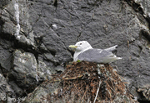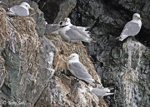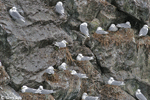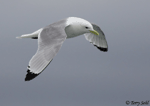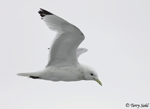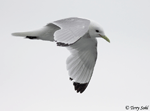| Length: 16 inches | Wingspan: 36 inches | Seasonality: Rare Visitor |
| ID Keys: Black legs, unmarked yellow bill, dark eyes, black wingtips without spots | ||
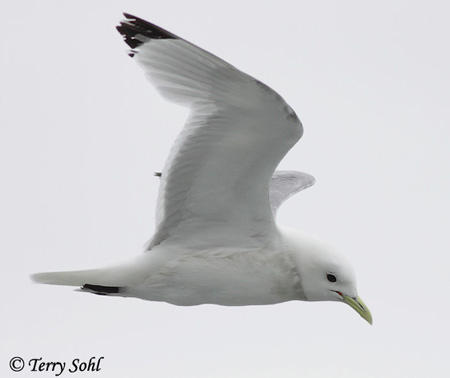 The Black-legged Kittiwake
is primarily a pelagic species, rarely spending time on land except during the
breeding season. They are generally rare migrants and winter visitors
inland. Kittiwakes are named after their loud, piercing call.
The Black-legged Kittiwake
is primarily a pelagic species, rarely spending time on land except during the
breeding season. They are generally rare migrants and winter visitors
inland. Kittiwakes are named after their loud, piercing call.
Habitat: Spends the majority of its life at sea, anywhere from the coastline to far out at sea. Breeds on steep cliffs near the Arctic.
Diet: Primarily feeds on fish, but will also eat crustaceans, mollusks, marine worms, and insects.
Behavior: Often forages while in flight, dipping down to the water's surface to grab fish and other prey. They will also swim on the ocean's surface and grab food items.
Breeding: Non-breeder in South Dakota.
Interactive eBird Map: Click to access an interactive eBird map of Black-legged Kittiwake sightings
Song: A loud ki-ti-waaake
Migration: Summers in the extreme north around the Arctic. Winters off both coasts of the U.S., generally well offshore.
Similar Species: Sabine's Gull (winter plumage), Red-legged Kittiwake (not seen in South Dakota).
Conservation Status: Wide fluctuations in local populations, with some areas experiencing huge increases in numbers and others experiencing large decreases.
South Dakota Hotspot: A rarity, but most sightings have occurred below the Missouri River reservoir dams.
Further Information: 1) USGS Patuxent Bird Identification InfoCenter, Black-legged Kittiwake
2) BirdWeb - Black-legged Kittiwake
3) Audubon Guide - Black-legged Kittiwake
Photo Information: August 8th, 2010 -- Near Seward, Alaska -- Terry L. Sohl
Additional Photos: Click on the image chips or text links below for additional, higher-resolution Black-legged Kittiwake photos.
| Click on the map below for a higher-resolution view |
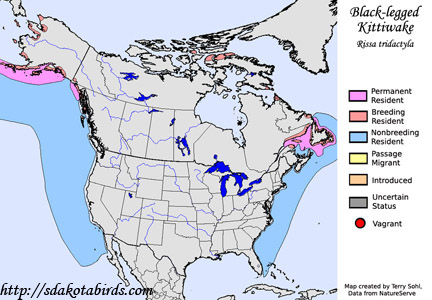 |
| South Dakota Status: Rare migrant, most often seen along the Missouri River. |
Additional Black-legged Kittiwake Photos
Click for a higher-resolution version of these photos
